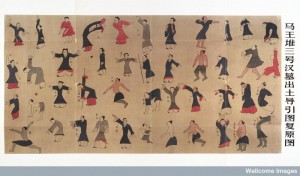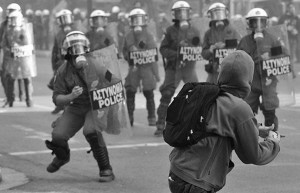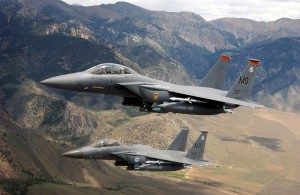Over at millionaire genius Tabby Cat we have
a little piece I can riff on. Anyone who has ever done push hands with a Cheng Manqing lineage person has probably encountered the "why do I need to defend my head defense." It is so weird, they never admit that they are making a mistake. But Tabby does something interesting. He claims that the difference in push hands methods is an indicator of a difference in the fruition that each person is seeking.
Here is what Tabby says the purpose of push hands is:
The Push Hands Drill of Tai Ji Quan is a diagnostic practice to identify tension in oneself and a partner and a developmental practice to foster skill in the application of internal energy to such identified tense zones to move the partner's entire body with a light physical touch.
He contrasts that with many other schools who teach push hands as a safe way to approach combat skills development. He then points out the flaw of the combat approach by saying that the observable fruition does not support it's stated purpose. For example, defending a position in fixed step push hands (the way many people do) simply doesn't work in combat.
He is using the observed fruition to examine the method. What he should be doing is using the observed fruition to examine the
view which inspired the method. All
views produce an experience. Tabby Cat has made his
view known on his blog countless times, he believes the human race is doomed and therefore he has chosen to become a cat.
For me, views always come first. My view of push hands is that it is a game designed to get us to drop our aggression. As the first Chapter of the
Daodejing explains, when you drop your aggression the order of the cosmos reveals itself (note: there is no "it" or "self", the use of language creates some limits here). One might ask, "After I have seen the order of the cosmos, why would I want to do push hands again?" And the answer is that the order of the cosmos reveals itself differently each time. Experiencing the order of the cosmos is not an advantage, it doesn't make us superior or more powerful, it is simply a moment of inspiration.
Can you use this 'order of the cosmos' inspiration to fight? Of course you can. It would be a very mundane usage by society's standards, but the cosmos doesn't care.
Now let's go back and analyze the method. The method of push hands is to meet your opponent hand to hand while maintaining, embodying and expressing
kong ling.
Kong means emptiness and
ling means liveliness. What I gather from Tabby's description is that his recent push hands partner (lets call him Mr. Pause) was
ling but not
kong. I surmise this because Mr. Pause declared he could knock Tabby upside the head if he wanted to (a demonstration of
ling), yet he was losing the matches because Tabby could feel Mr. Pause's tension and up root him demonstrating that Mr. Pause was not
kong (empty).
Tabby on the other hand must be
kong (empty) but not
ling (lively) because he only feels obligated to cover his head when he is boxing.
How did it come to this? If you are aggressive, you are going to have a strategy. Having a strategy will occlude your ability to see the order of the cosmos. Tabby's strategy is to be like water. If he is like water his opponent will find nothing in him to push on, while he can simultaneously use extraordinary sensitivity skills to find a little sliver of tension in his opponent. Once he finds that tension in his opponent he can expand condense or spiral his qi against the sliver of tension and the opponent will up root himself. The problem with this method is that it works. (Most martial arts methods have that problem.) However, does it work when Tabby has his hands up at head level? My guess is that it does not. The test is not a quick hook punch to the head, it is a slow hook punch to the head with a soft lady-like hand. It doesn't actually matter whether Tabby or Mr. Pause does the hook punch it's the hands going up that matters.
We already know the answer to our test because Tabby believes that boxing is a superior way to hit. In boxing the body is like an on/off switch, it goes from
dodging and weaving like water, then sudden
switches on with an icy strike to the jaw.
Ali Video...

Of course boxers don't protect their groin because it is illegal to strike there in the game of boxing. So what are we doing? trading the groin for the head? No. All the push hands teachings about protecting the head or the groin or the space on the ground (fixed step push hands) or the center line or whatever, they are all just mind forms, all limitations, all preliminary experiments meant to show you what not to do. Even Tabby's idea about finding tension in the opponent is just a trick to get the student to see the limitations of focused sensitivity. OK, you found the tension in my left baby toe? you feel it? You got it? Now feel this right hook on your chin, subtle huh?
If you are
kong the opponent can not feel the slightest bit of tension in your body, they can only feel a big unified whole. If you are
ling you can do anything, you can punch or kick, run around like a monkey, or eat some salad.
Kong and
ling are pretty easy to do separately. In order to do them simultaneously one must have a view which matches how things actually are. Because we humans are always wanting stuff and setting goals and confusing what we see with what we wish we saw, our view gets out of sink with the way things actually are. There is a Starbucks on practically every corner.
It's enough to make a person wish to be a cat!
When our view is in sync with the way things are, mind and movement are in harmony. Then qi automatically fills the space between the quiet body and the active mind. The body is kind of like a hotdog, wrapped in mustard and lettuce which is the qi, and surrounded by a bun which is the mind . When you want to take a bite you pick up only the bun and move it to your mouth, don't touch the hotdog or the mustard.
The active mind is not busy or distracted, it is spacially involved like a person standing on the edge of a cliff.
Like crossing a river in winter.
--Laozi
When a person is
kong and
ling, empty and alive, at the same time he may still sense his opponent's tension-- but he doesn't need to look for it. He just does whatever movement he fancies and the opponent will not be able to stop him. With
kong-ling there is no impulse to defend or to root. That doesn't mean there is no defending or dodging. Like punching or reciting poetry--they are options.
I'm always happy to debate these things over a bowl of coffee-flavored milk in Seattle, or to test them out next time I'm in Tokyo fighting Godzilla.
 Lately I have been teaching new Taijiquan students two basic daoyin animals, the cat and the dog. They are somewhat opposite ways of moving, but in my current way of thinking they both embody monster motor movement. They each begin from a pre-locomotor physicality and progress to two very different sorts of four legged walking. I'm avoiding the word crawling because everyone already thinks they know what that means, and what I'm talking about is animal specific movement. I then try to get students to use this information to animalize their Tai Chi.
Lately I have been teaching new Taijiquan students two basic daoyin animals, the cat and the dog. They are somewhat opposite ways of moving, but in my current way of thinking they both embody monster motor movement. They each begin from a pre-locomotor physicality and progress to two very different sorts of four legged walking. I'm avoiding the word crawling because everyone already thinks they know what that means, and what I'm talking about is animal specific movement. I then try to get students to use this information to animalize their Tai Chi.

 Tai Chi & Qigong:
Tai Chi & Qigong: 
 WHAT STYLE OF QIGONG IS BEST?
WHAT STYLE OF QIGONG IS BEST? Taijiquan has also been a gateway for many people to explore culture, philosophy, art, literature, history, changes in diet, lifestyle and even world-view.
Taijiquan has also been a gateway for many people to explore culture, philosophy, art, literature, history, changes in diet, lifestyle and even world-view. I've been sitting on this blog post for a while. It relates both to Sgt. Rory's workshop last weekend and the Tabby Cat push-hands debate, but it is more deeply about how and why I train.
I've been sitting on this blog post for a while. It relates both to Sgt. Rory's workshop last weekend and the Tabby Cat push-hands debate, but it is more deeply about how and why I train. It is very logical to begin martial arts training with simple attack, defend and escape ideas. Then to move on to structure training both as "fortification" and to improve power generation. Next one needs to understand how good structure is broken, so more power training along with targeting and angles--like siege warfare. After that it's important to make our forts mobile, and either tougher like tanks, or freer like airplanes. Whether by conditioning (tanks) or sensitivity (airplanes) we avoid metal (think: structure) against metal confrontation until we have maneuvered into the superior position.
It is very logical to begin martial arts training with simple attack, defend and escape ideas. Then to move on to structure training both as "fortification" and to improve power generation. Next one needs to understand how good structure is broken, so more power training along with targeting and angles--like siege warfare. After that it's important to make our forts mobile, and either tougher like tanks, or freer like airplanes. Whether by conditioning (tanks) or sensitivity (airplanes) we avoid metal (think: structure) against metal confrontation until we have maneuvered into the superior position.